Worlds of Adventure (2001)
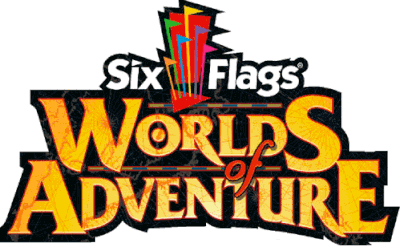
After a single season as Six Flags Ohio, the little family park on the shore of Geauga Lake was renamed again. SIX FLAGS WORLDS OF ADVENTURE officially opened in Spring 2001, combining a full-sized Six Flags and a full-sized SeaWorld into one. Occupying a 377-acre plot (with the park itself filling about 175 acres), the gargantuan Worlds of Adventure would easily rank among the largest Disney Parks on Earth.
Subdivided into the “Wildlife” (former SeaWorld) and “Wild Rides” (former Geauga Lake) sides, the monumental park offered a combined nine “lands,” 44 rides (more than any Disney Park) including 10 roller coasters, a full Hurricane Harbor waterpark, dolphins, sea lions, penguins, sharks, stingrays, zebras, and an aquarium, a water ski stadium, 4 animal show stadiums, a 4D theater, a simulator, and a whole lot more.
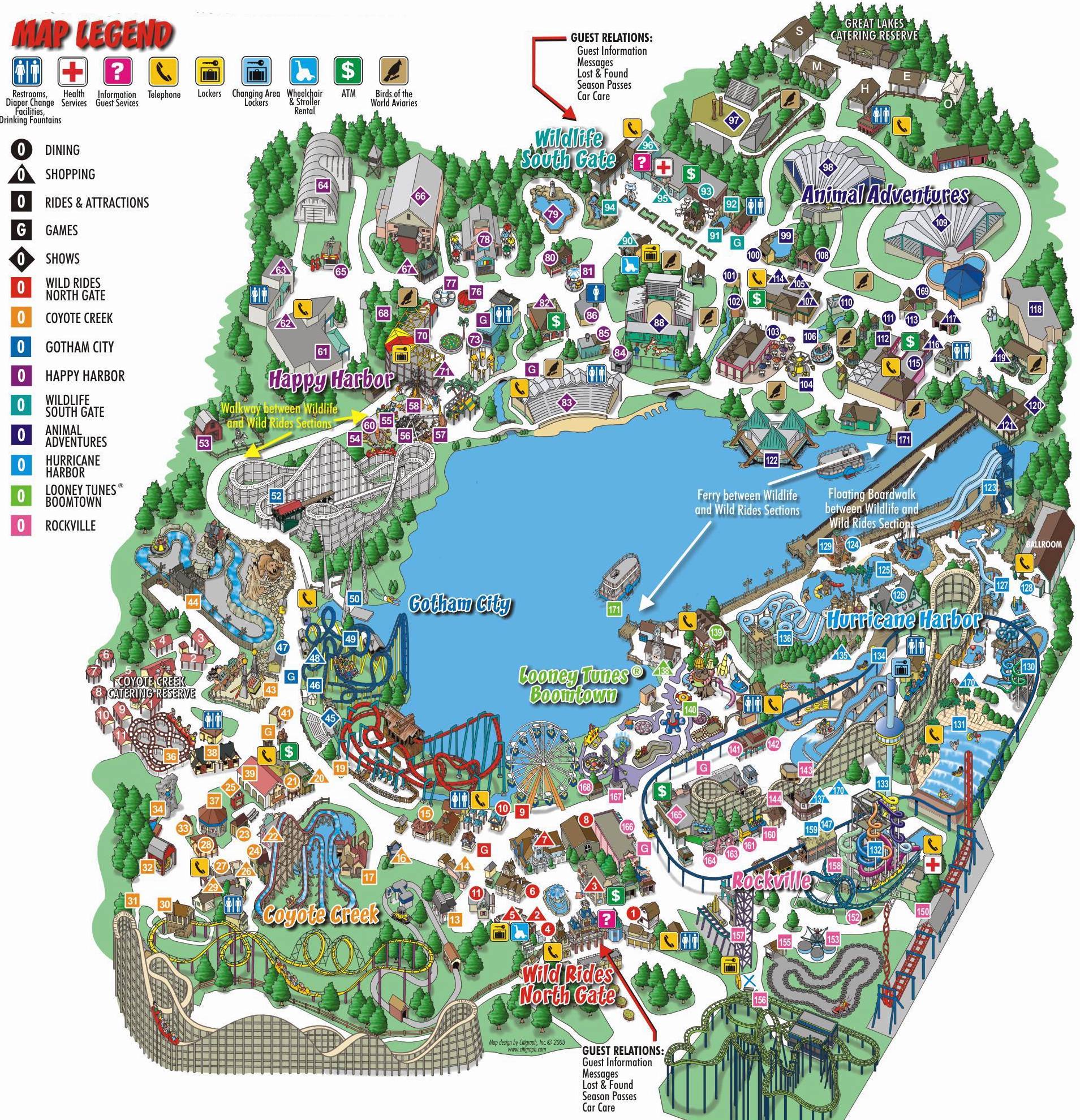
In time for the start of the season, a new quarter-mile forested path was opened along the northern edge of Geauga Lake connecting the two properties, while a floating boardwalk was built nearby. Geauga Lake’s historic steamboats also became taxis between the once-juxtaposed shorelines.
Once more, it’s difficult to imagine this moment from the perspective of those who lived it. An amusement park and an animal park that – for decades – had merely served as backdrops for one another were now connected. Thirty years of harmony between them had ended in their union. A park of killer whales and wooden coasters; shark exhibits and Batman ski shows; Happy Harbor and Looney Tunes; motion simulators and riverboats; sea lions and Superman…
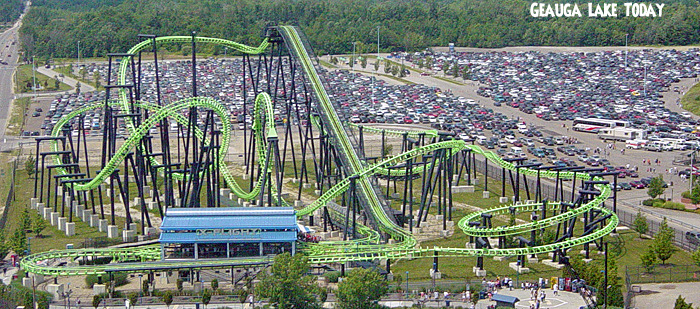
As if all of that weren’t enough, add to the mix X-Flight, the park’s seven coaster in five years. A neon green Vekoma Flying Dutchman, the early flying coaster – looming on an expansion pad just alongside the park’s “Wild Rides” entrance – stood as a big, bold, bright icon of a new park, reborn again. Cutting edge, pulse-pounding, adrenaline-pumping, and legitimately new, X-Flight was a bold, brazen embodiment of Six Flags’ hopes for their Ohio park.
“Three Worlds, One Ticket.” By several metrics, the mind-boggling Worlds of Adventure was the largest amusement park in the world; a wonderfully experimental fusion of history layered with the supersaturated corporate power of Six Flags at its boldest and brashest.
The perfect dichotomy of “Wildlife” and “Wild Rides,” for a moment, it would’ve been easy to imagine that Six Flags Worlds of Adventure might actually have a chance to overtake Cedar Point in the era’s “Coaster Wars,” and to become a national destination park in its own right.
It was dizzying… and it was doomed… Though it would’ve been difficult to convince anyone who encountered Six Flags Worlds of Adventure’s marketing in 2001, by the decade’s end, no trace of the 120-year-old park would remain but cracked concrete and weeds…
Adventure Falls (2001 – 2003)
How did Six Flags Worlds of Adventure go so wrong in such a short time? Obviously the issues that plagued this gargantuan amusement park were complex, so to untangle the threads, we need to pause our history of the park to see what Six Flags missed.
1. It was overexpanded
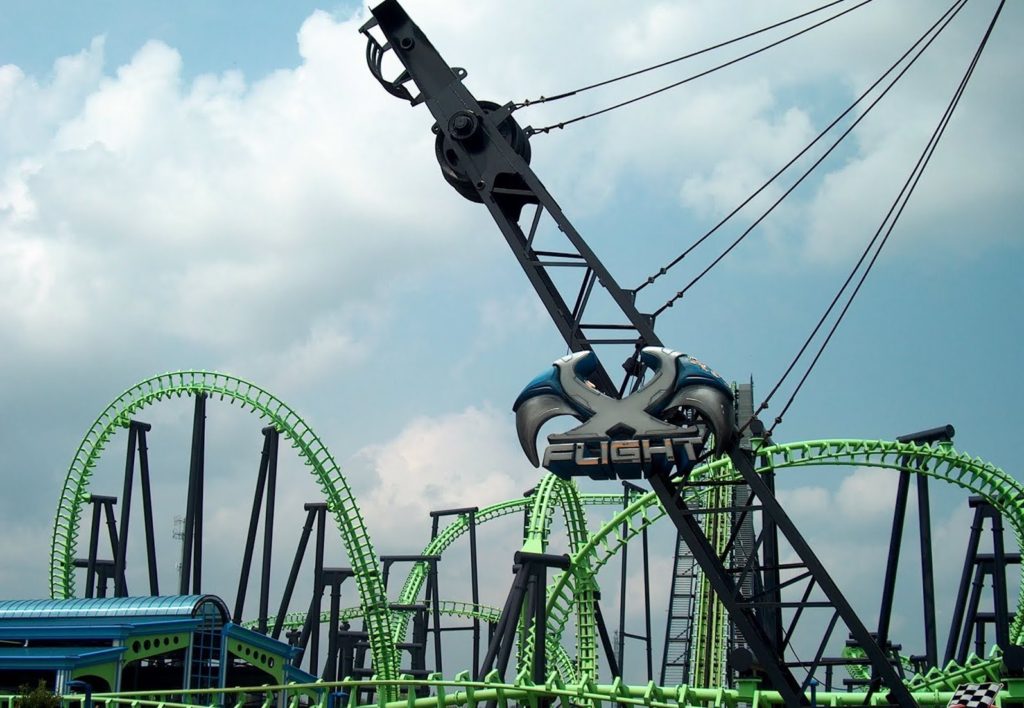
The 2001 rechristening of Six Flags Worlds of Adventure was really the culmination of an unprecedented expansion that Premier Parks had begun upon buying the park in 1995. Adding seven roller coasters (Mind Eraser, Serial Thriller, Roadrunner Express, Batman: Knight Flight, The Villain, Superman: Ultimate Escape, and X-Flight) in five seasons, the park had been strategically selected and artificially rocketed into a role as the flagship of Six Flags; an emblem of the company during its most breathless, frantic, and hungry period.
Unfortunately, bigger does not always mean better. Ohio’s little family park had been selected for weaponization in the Coaster Wars come hell or high water, and Six Flags’ “embiggening” of the park was at best artificial, and at worst, detrimental. Imagine if your local family park plopped six skyscraping coasters into its footprint. How would it change the park’s atmosphere? Its audience? Its ambiance? Its marketing? Its history?
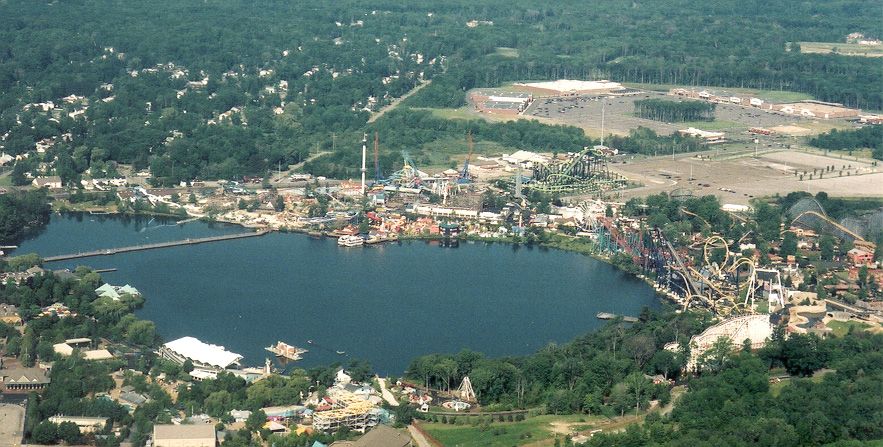
On top of all those staggering, brochure-ready statistics the park proudly flaunted, Six Flags Worlds of Adventure also boasted some frustrating ones: two full-sized parking lots; two main entrances; two Guest Relations offices; two lost & founds. Imagine ending the day on the “wrong” side, or entering the “wrong” parking lot to search for your car. The park was too physically large, with only a quarter-mile wooded path or a sun-baked boardwalk to connect two properties that hadn’t been built or evolved with connection in mind.
The money Six Flags had poured into the Aurora park had caused a major bump to the park’s attendance (a record 3 million guests in 2001). So yes, people came to Six Flags Worlds of Adventure. The problem is, they didn’t come back… Why?
2. It was underbuilt
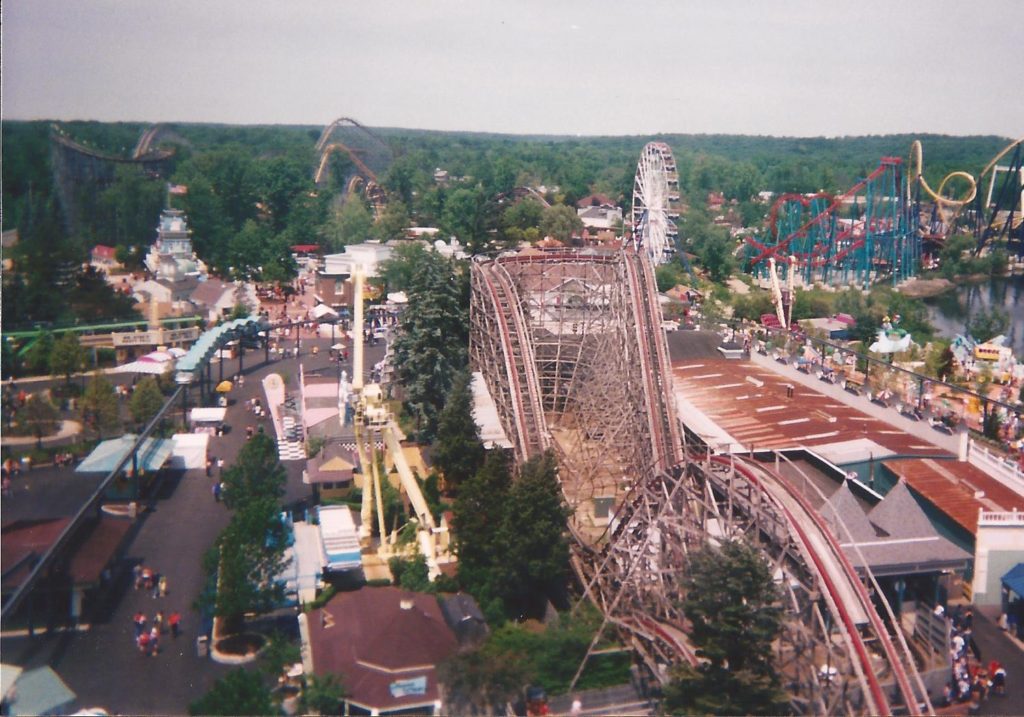
It’s easy for Millennials to wax poetic on the scale and scope of Six Flags Worlds of Adventure. Through the rose-colored glasses of childhood hindsight, it’s fun to praise the mega-park conceptually. Y’know, that whole thing about a Six Flags and a SeaWorld, built on opposite sides of a lake, merging, animals and coasters… You get the picture.
But logistically, Six Flags Worlds of Adventure was still… well… two little family parks, built on opposite sides of a lake. So even if it may sound like a paradox to say that the park was both overexpanded and underbuilt, think about it: both parks still sported restrooms from the ’70s; restaurants meant to house local audiences, not national ones. Pathways were cramped; water fountains were rare; ride capacities buckled under the weight of descending crowds, drawn by the park’s media blitz. Despite being billed as “new,” Worlds of Adventure was not a master-planned, A.D. park. It was an old one, with old rides and old charm, now thrust into the modern limelight.
Put simply, merely merging two parks didn’t account for the operations and logistics of increased crowds, leaving many summer days feeling pretty miserable… Especially – if you ask some people – because of the makeup of those crowds…
3. It was devalued

For better or worse, Six Flags has always held its place in the nation’s amusement industry by clinging on to a particularly divisive concept: “give away the gate.” When Six Flags Worlds of Adventure opened, undiscounted daily admission was $37.99 ($1 less than Cedar Point), while an annual pass – valid at all 18 Six Flags parks in the nation – cost just $49.99. In-park advertisements even encouraged visitors to upgrade to a pass for as little as $10 on their way out the gate.
And frankly, that was a problem. Six Flags’ “give away the gate” pricing model is pretty infamous in the industry. For one thing, their relatively low-cost admission and extremely low-cost passes merely increase the price of everything else and layer dozens of high-price add-ons into a day. (Today, some Six Flags parks charge more for parking than a daily ticket.) Second, Six Flags’ pricing also encourages the summer tradition of “amusement park as child care.” Line-cutting, fights, chaperone policies, and even parking lot brawls are annual headlines at several Six Flags parks to this day, where season passes cost as little as $6.99 per month.
Whether it’s fair or not, the change in demographic brought about during the “Six Flags” years – thrill-seeking teens drawn by the park’s refocus on coasters and its rock-bottom admission – caused a whole lot of NIMBYism – that is, Not In My Backyard. Anecdotally, the families who’d known and loved the park gradually stopped coming, as stories of bus routes from Cleveland left Aurora’s locals uneasy. And to make matters worse…
4. It was poorly managed
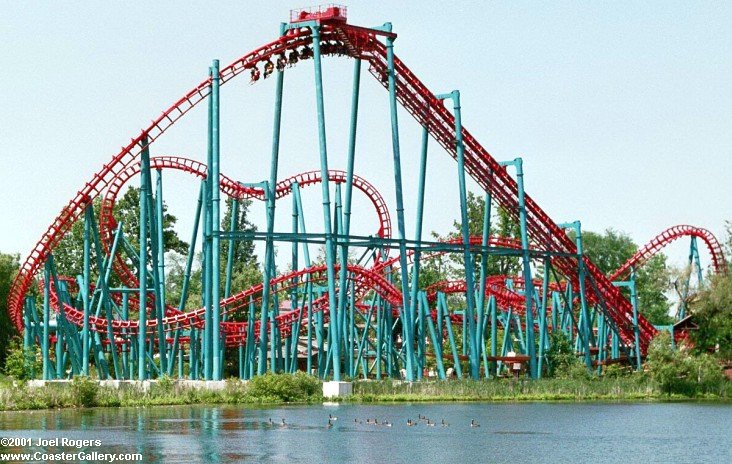
When it came to the rapidly-expanding Six Flags Inc. of the early 2000s, there were a few things you could count on: roller coasters, low admission prices, and poor management. It’s true that today, Six Flags parks still vary wildly in quality, cleanliness, friendliness, maintenance, and other important factors. But during the rapid expanse of the New Millennium, the parks pretty uniformly lacked consistency and quality.
So while the map of Worlds of Adventure may look astounding and aspirational, the park itself was… well… dirty. Trash cans often overflowed. Restrooms went without cleaning. Operations were slow. Expectations for frontline workers (many, teens) weren’t upheld, and in-park security was lax. Landscaping was often overgrown and gardens untended. Sometimes, certain rides didn’t open at all with no explanation.
At its worst, the Six Flags “formula” had turned Northeast Ohio’s family park into an increasingly unkempt midway littered with coasters, too many teens, and too few facilities. Is it any surprise that guests wouldn’t race to return to Worlds of Adventure?
5. It was in the wrong location, location, location

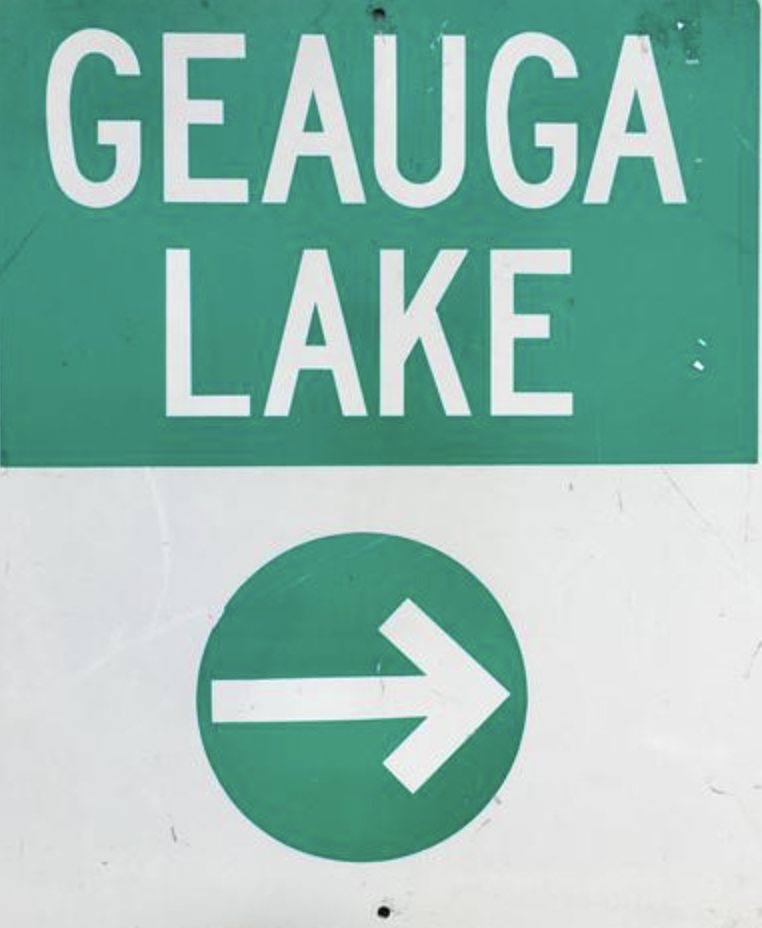
If real estate is all about location, Six Flags’ attempt at an international destination park messed up big time. Despite both Six Flags and SeaWorld’s association with Cleveland, any Northeast Ohioan will tell you that Aurora is not Cleveland. About a 40 minute drive from Cleveland proper, Aurora is a historic and largely rural town whose population in 2001 was less than 14,000 people.
No interestates pass through or even near Aurora, so a trip to Geauga Lake from either Cleveland, Akron, Youngstown, or Pittsburgh required a drive along two-lane country roads, past outlet malls and farms. When parks built for locals were suddenly offered up to the nation, those tiny two lane roads and small-town downtowns were overrun with traffic, and construction projects flailed in an attempt to widen roads, install signage, and route descending crowds to the “new” park. Locals were no longer the target market, yet it was their towns that were being uprooted to accommodate the must-see mega-park.
The instantaneous shift from a local’s amusement park to Six Flags Worlds of Adventure also meant that, unlike Cedar Point and Sandusky’s gradual development into a destination, there were no hotels to capture visiting guests; no restaurants to feed them after park hours; no way to transport them to or from Cleveland or its airport.
The Adventure’s End
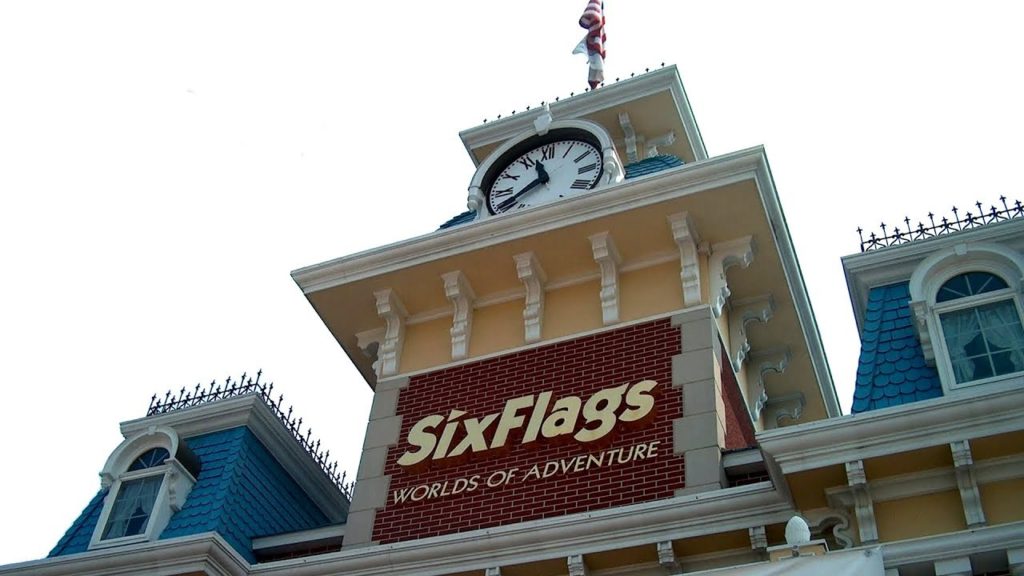
In a 2001 interview, Six Flags Inc.’s then-president Gary Story touted the mega-park’s creation and its future. “Our vision all along was to create an entertainment destination with the scope, magnitude and variety of entertainment that will provide a bigger-than-life experience and catapult this park into a unique position in the travel and recreation industry as a destination super-park. Over the next five years, that vision will result in a variety of entertainment opportunities for Six Flags Worlds of Adventure.”
Story suggested that the park’s plans included a six-acre rainforest-themed land including a walkthrough volcano, tigers, alligators, and flamingos; a dark ride sending guests to the ocean’s deepest abyss; an underwater submarine ride; more attractions on the “Wildlife” side of the park, and vast expansions to family areas like Happy Harbor and Looney Tunes Boomtown. “And, of course,” Story added, “we will continue the Six Flags tradition of building world-class roller coasters.”
Three years later, Six Flags Worlds of Adventure was no more.




What a fantastic place! Wish it was still there. It just doesn’t make sense. Combined the two parks should of been a must visit destination for people nationwide. A huge loss for Northeast Ohio.
I grew up not far from Geauga Lake on Pettibone Road in Solon, Ohio. We rode our bikes to the park in the 1940’s. We often got in with various companies employee days as they just thought we were kids who belonged to the group.
My memories of the early years were frozen custard, the bug, the 4th of July fireworks on the lake that my parents would bring us to see and I was scared to death! The swing ride that seemed yo spin you over the lake!
Living out in the country, a rural area, with the ability to go to such a fun place so easily was quite wonderful!
In the evening my parents would take us there and it seemed far different at night than in the daytime. I loved the roller coaster and would ride over and over again.
Now forward to my early teens….1948…on. The roller rink. I skated almost every night in the summer. What could be better than an open air roller rink on a lake with a live organist playing music to skate to all evening! It was wonderful as dance roller skating was very popular.
Later the rink burned down and I was heartbroken as I had spent so many happy hours there.
As a summer job when I was in college ( graduated high school in 1952) I was a lifeguard at the Lake….I also lifeguarded at the pool in Geauga Lake but I much preferred the job at the beach.
My story is before all the changes that made it into a huge attraction but I loved the years it was just a wonderful small beautiful park.
BTW I have never found frozen custard as good as that at Geauga Lake and there was no other roller skating rink with solid wood floors, an organist , and the breezes coming off the lake on hot summer nights in Ohio!
Elaine Kertes Clabeaux
eac@pacbell.net
Was chosen to be “kissed” by Shamu in 1972!
My boyfriend and I now my husband) use to go to the park and Sea World when we were 17 years old. Sitting in the wooden bleachers at the time, when the performer came up to the stands to choose a person, my boyfriend was pointing at me! Down by where Shamu was in the pool, she said for me bend sideways over the pool, Shamu came out of the water and touched the side of my face! Memories! Wish I still had the picture they took with their Polaroid camera!
I’m 81 and my siblings are all deceased so I can’t ask them. Do any of you remember little overnight cottages you could rent and stay at being there? This was in the 40’s and I have a vague memory. Thx
I grew up across the street from Geauga Lake in the neighborhood across the street. I grew up there and I hated the way they closed down. We had a pass where we could swim in the lake. I miss that amusement park.😢
I still miss the Geauga Lake of the 80’s. I have so many memories from Dad’s company picnics, to wading in The Wave (the original) anticipating the big wave action, to meeting my first love while in line to ride the Raging Wolf Bobs! It almost makes me cry.
I really enjoyed this. Thank you for posting about it on Strange and Hidden. I have memories of GL of course and SW growing up (my first coaster was the Double Loop in the 70’s), taking my kids there, and then seeing it die. I saw the mold in the bubble gum vending machine as my friends’ family and mine climbed the steps to the monorail. I mourned the loss of the Rotor–which was my favorite ride. I got to ride it once about 23 times or more in a row because no one was in line. There was a man that stayed in it all day long that I recall. So many memories of Aurora and cutting through the traffic by heading east from Route 8 and cheating at the stop light with my ex in the 90’s. And somewhere, I have a penny that was stretched and stamped in 1996.
My memories stretch across 5 decades.